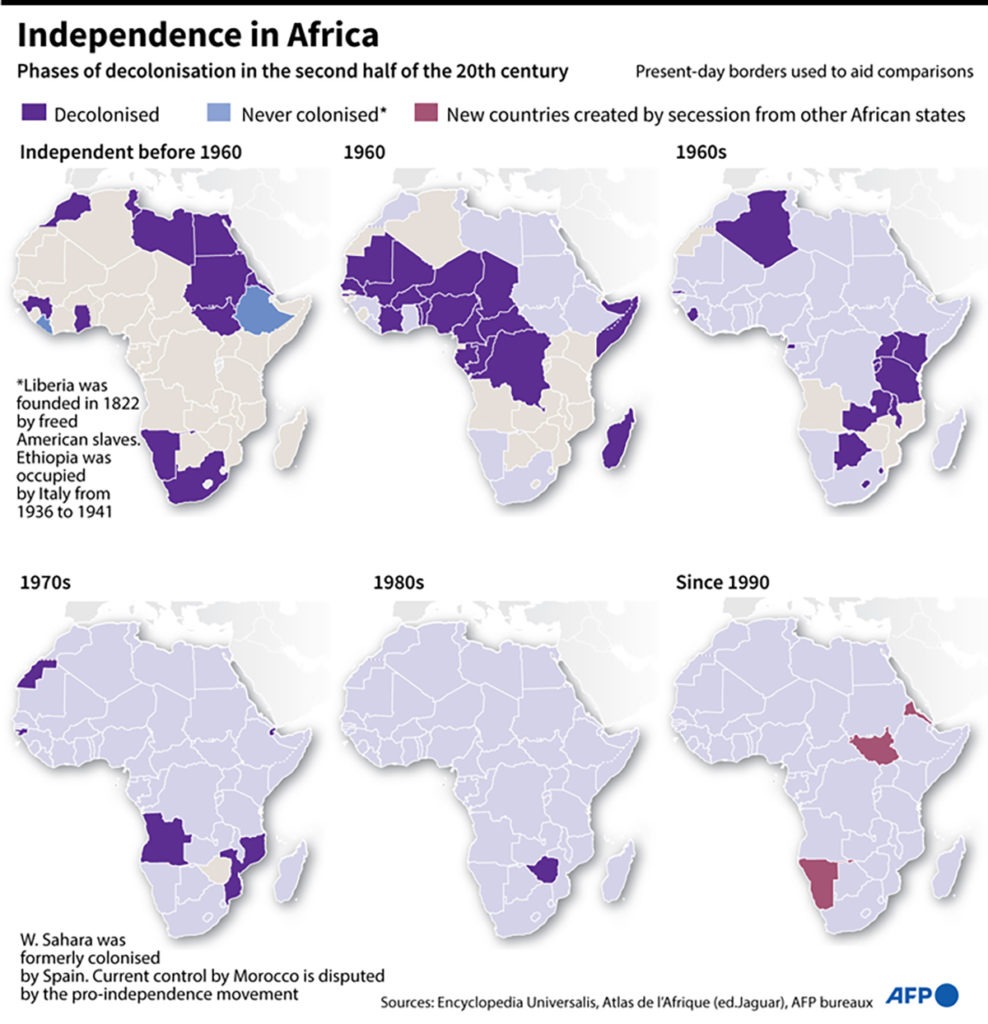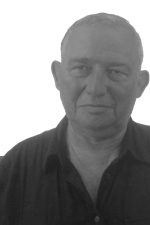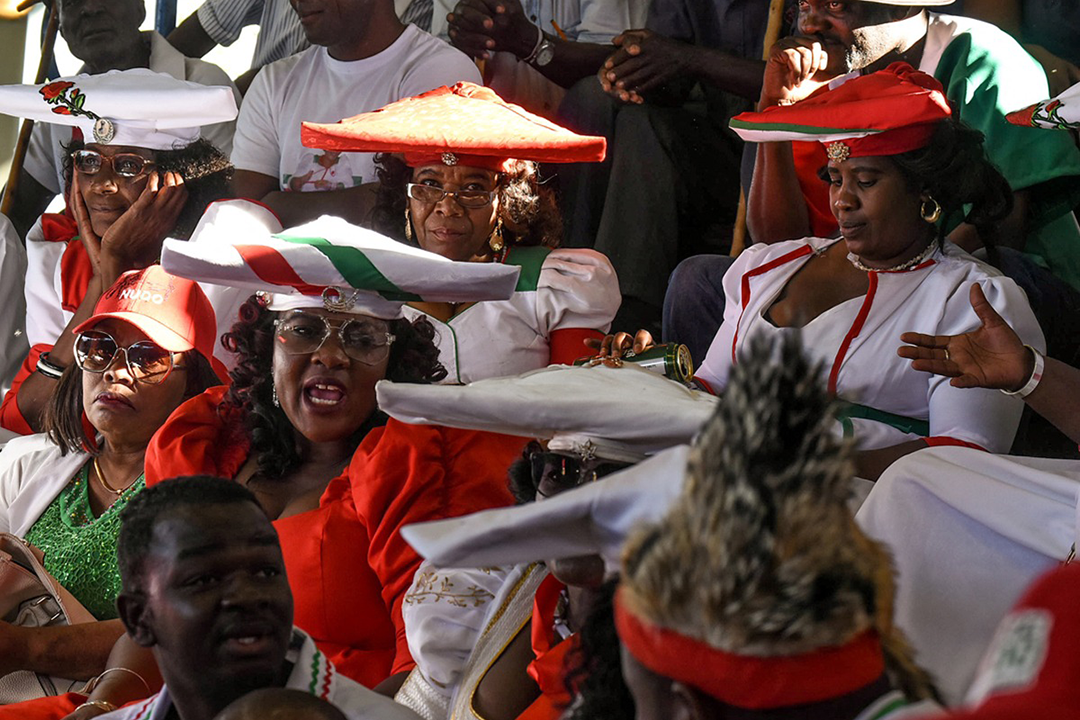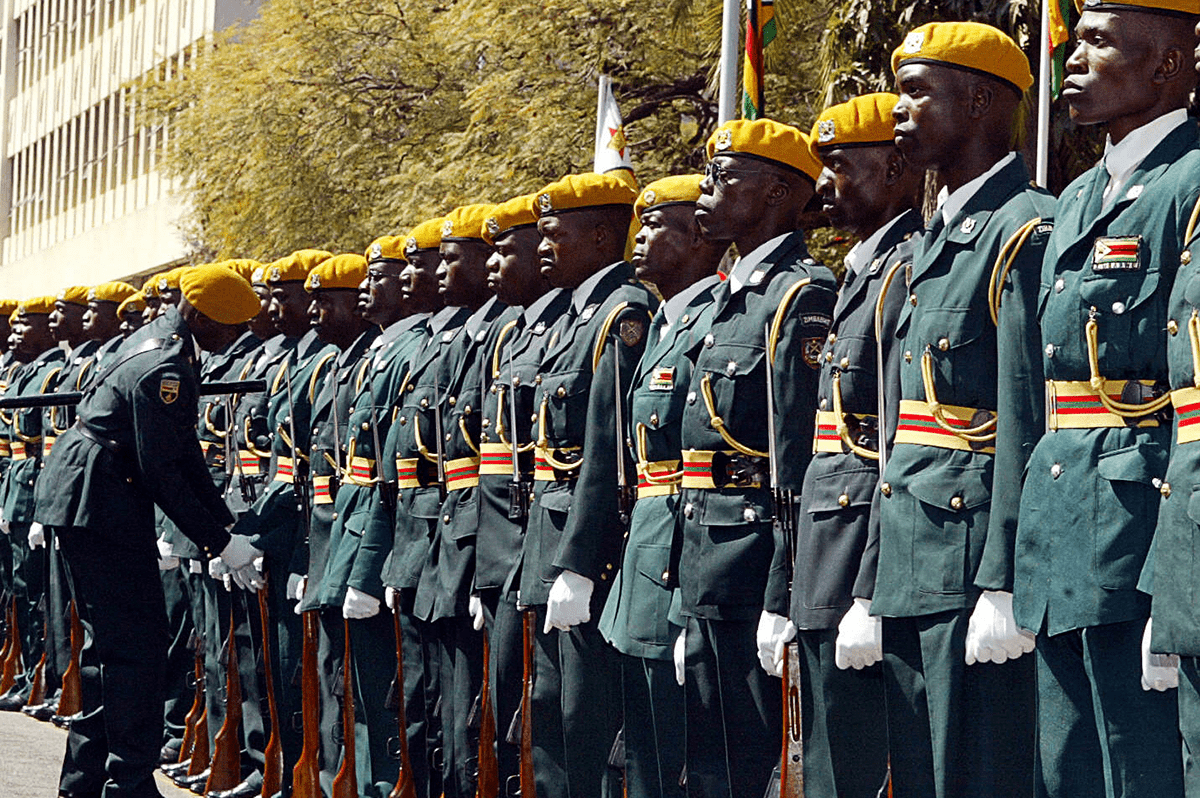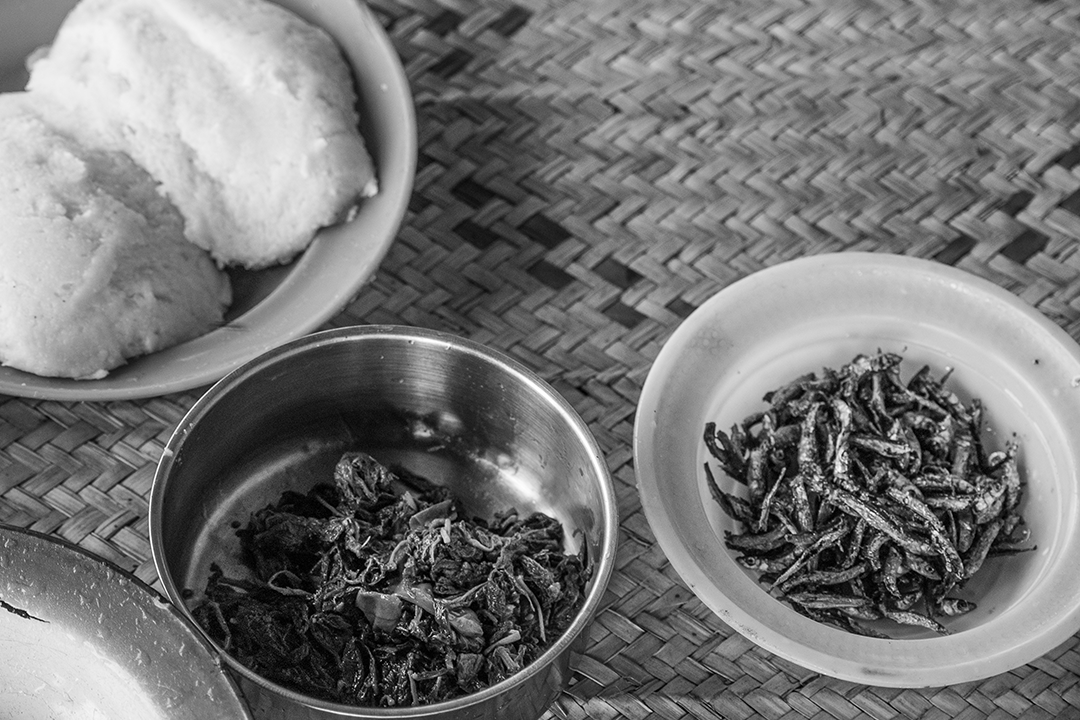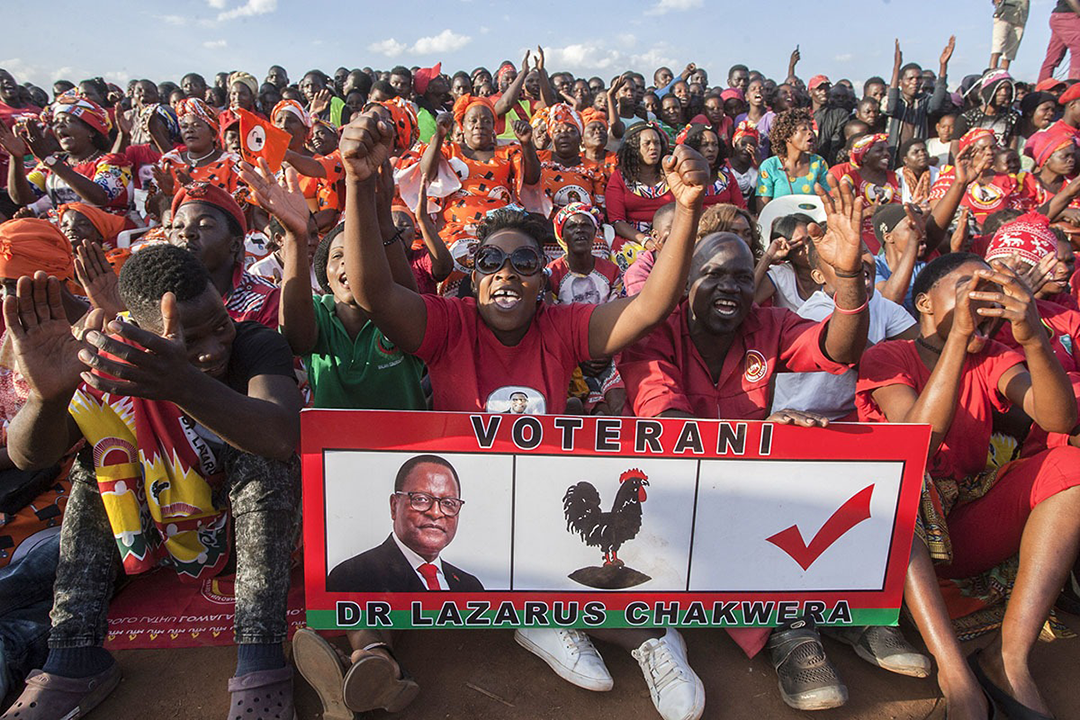Freedom, but also a legacy of one-party states, civil wars and violence against women and children
Independence was achieved in several African countries after a national liberation war. In many cases, the liberation movements eventually achieved their ultimate aim, at the cost of enormous sacrifices, and managed to gain access to power. Yet, the victory was not always a military one.
In Algeria, for example, the French army took the upper hand on the field against the Front de Libération Nationale (FNL) freedom fighters but lost the political battle, which prompted General Charles De Gaulle to recognise Algeria’s independence in July 1962.
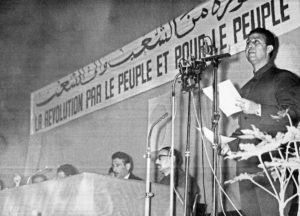
Algeria’s president Ahmed Ben Bella (R) delivers an opening speech during a National Liberation Front (FLN) conference in Algiers 16 April,1964. Photo: STF/AFP
In several cases, the strict discipline imposed during times of the struggle within the liberation movements shaped one-party states after independence. This was facilitated by the proximity of many of these anti-colonial movements to the Soviet Union and its allies, or with China. These ties in their struggle against the colonial power was one of necessity; only Russia and China were explicit in their support, while the United States and European countries were reluctant to put pressure on a NATO ally like Portugal during the Cold War.
In many sub-Saharan countries, including South Africa, Namibia and Zimbabwe, liberation movements remain in place as the ruling party. This is also the case in Angola and Mozambique, where the leadership was influenced by Marxist ideology and adopted the culture of a single-party state. In Angola, the aggression of South Africa’s apartheid regime and the civil war between the two liberation movements, União Nacional para a Independência Total de Angola (Unita) and Movimento Popular de Libertação de Angola – Partido do Trabalho (MPLA) maintained a lengthy climate of tight social control and the permanence of a one-party state whose face, especially in rural areas, was more the party than the state. The UNITA challengers of the MPLA government applied an even stricter discipline in the state-like government structures set up in their so-called free areas.
Mozambique’s struggle for independence went beyond the mere transformation of one state. Several liberation movements owe a lot to the Frente de Libertação de Moçambique (Frelimo), which offered support namely to South Africa’s African National Congress (ANC), as Nadja Manghezi describes in her book, The Maputo Connection: The ANC in the World of Frelimo.
Uganda’s leadership also acknowledged Frelimo’s legacy. During the years he spent at the University of Dar es Salaam, where he studied political science from 1967 to 1970, the current Ugandan president, Yoweri Museveni, had close links with Frelimo leader Samora Machel and with the Tanzanian president, Julius Nyerere.
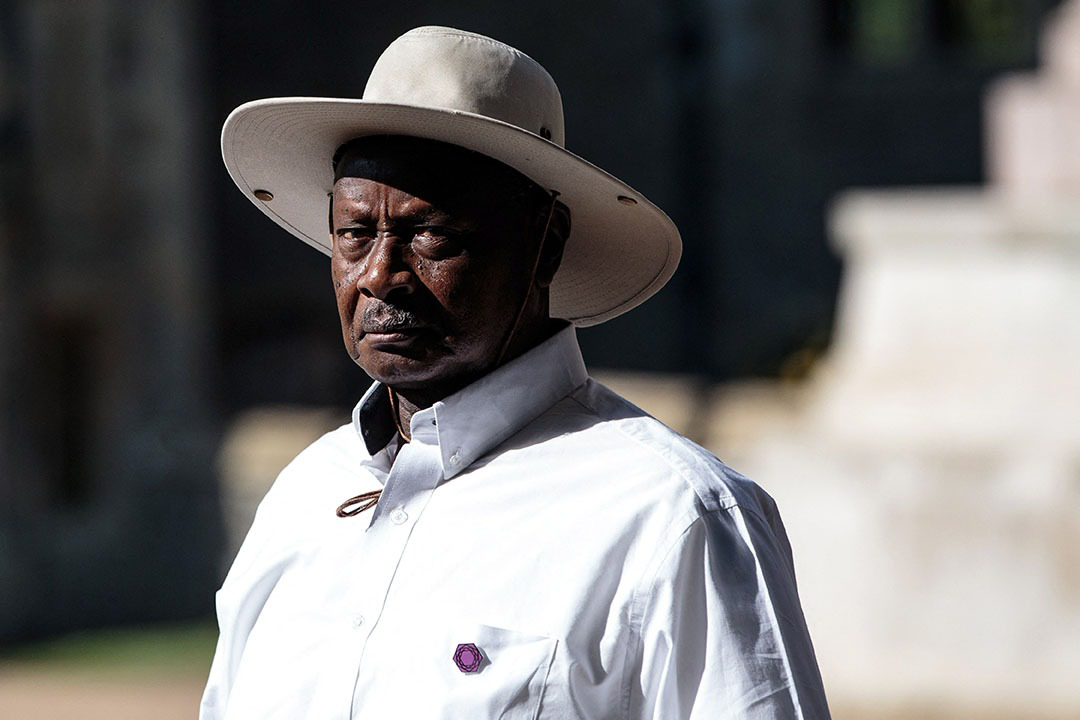 Ugandan President Yoweri Museveni arrives for a Commonwealth Heads of Government meeting (CHOGM) retreat in Windsor, west of London on 20 April, 2018. Photo: Jack Taylor//AFP
Ugandan President Yoweri Museveni arrives for a Commonwealth Heads of Government meeting (CHOGM) retreat in Windsor, west of London on 20 April, 2018. Photo: Jack Taylor//AFP
Museveni, who in 1967 was elected chairman of the University Students African Revolutionary Force (USARF), which grouped students from Kenya, Zambia, Malawi, Zimbabwe, Ethiopia, Sudan, and Uganda, spent some time fighting alongside Frelimo in Mozambique. After that, in 1981, he began using his guerrilla experience to start the Ugandan bush war against Milton Obote’s dictatorship.
Museveni also supported a number of rebel movements such as John Garang’s Sudan People’s Liberation Army. During the so-called Africa’s World War in the Great Lakes, Museveni brought support to several Congolese rebel groups who fought the Kabila regime between 1998 and 2002.
To some extent, the Rwandan Patriotic Front (RPF), created in 1987, was another Frelimo heir. Its first president, Fred Rwigema, received military training in a Frelimo camp, where he met with Museveni’s brother, Caleb Akandwanaho, who later became major general of the National Resistance Army (NRA), after the Rwandan activist joined Museveni’s Front of National Salvation (Fronasa) in 1976.
The birth of the Eritrean Liberation Front (ELF) in 1960, followed by the creation of the Eritrean Peoples’ Liberation Front (EPLF) in 1970, was another legacy of the fight against colonisation. The difference was that the fight was no longer against the colonial power itself but against a decision to hand over Eritrea’s territory to Ethiopia, after the departure of the British administration from the former Italian colony in 1952, following a United Nation’s decision to federate both territories.
In Eritrea, the liberation movement set up its own administration, which ruled over entire “liberated” territories, finally achieving independence from Ethiopia in 1993. The EPLF benefited from the experience acquired by the complex systems of administration it had developed in its liberated territories, where it had introduced land reform and rural cooperatives.
But, as Terrence Lyons, professor at the school of conflict analysis and resolution at George Mason University in the United States points out, the EPLF, with its “legacy of intense socialisation, solidarity, and vertical command structures”, has produced one of the world’s most authoritarian parties.
“The post-war independence era started with great hopes, a referendum in which 99% percent of the population voted in favour of independence, the conversion of the rebel movement into a ruling party, and the creation of a consultative process to write a new constitution,” Lyons said in an introduction to his case study published by the Center for Strategic and International Studies (CSIS) in January 2019. “In 1998, however, a border war broke out with Ethiopia, resulting in the almost complete militarisation of Eritrean society. It ranks near the bottom of global assessments regarding democracy, human rights, religious freedom, and free media.
“All citizens are required to perform national service, which often takes the form of lifelong military conscription. These harsh conditions and the absence of economic prospects have contributed to an extraordinary exodus of Eritreans seeking asylum and generating a refugee crisis in Europe,” Lyons wrote.
In its 2020 World Report, Human Rights Watch (HRW) said: “Eritrea’s abuses, especially indefinite national service, continue to drive thousands of Eritreans into exile, including children.”
Yet Africa’s liberation movements, including the EPLF, played a significant role in promoting women’s rights, both out of necessity and for ideological reasons, Visitors to the EPLF’s “free areas” were impressed by their achievements in terms of gender equality, and according to Lyons, about 30% of the EPLF fighters were women.
In her book Women’s Lived Landscapes of War and Liberation in Mozambique, published in 2020, researcher Jonna Katto stresses the important role women played during the country’s independence war.
And in Angola, the Organização da Mulher de Angola, created in 1962 by Mariana Anapaz in the Congolese bush, mobilised women to participate in all revolutionary tasks, including military ones, but also in health and social services.
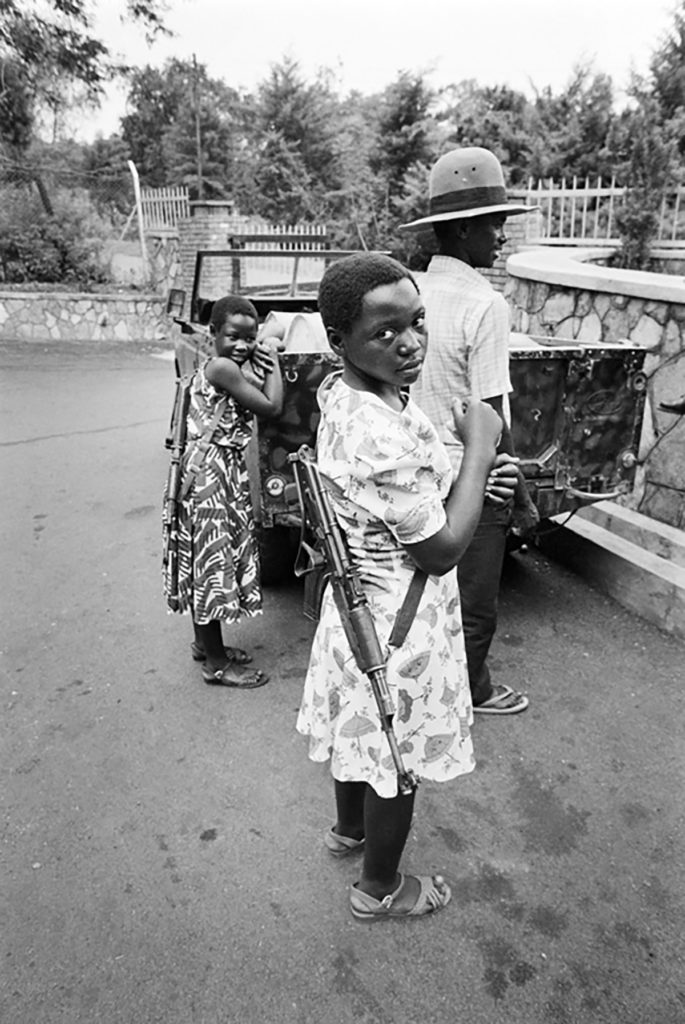
A National Resistance Army (NRA) girl soldier poses with her Kalashnikov on 26 January,1986 in Kampala, Uganda. The child soldiers of the NRA were mostly orphans whose parents were killed during the Obote regime. Photo: Alexander Joe/AFP
Paradoxically, a darker legacy of Africa’s fight for liberation has been a culture of violence against women and children in armed conflicts. In a 2002 paper, ‘Negotiating Post-war Identities: Child Soldiers in Mozambique and Angola’, anthropologist Alcinda Honwana estimated that more than 9,000 children in Angola, and as many in Mozambique, participated in the conflicts as soldiers. In Mozambique, Frelimo’s anti-communist rival RENAMO, and Angola’s UNITA, were active in recruiting child soldiers, but there are also accounts of both Frelimo and the MPLA governments using children, writes Honwana.
Meanwhile, UNICEF, which runs a programme to reintegrate child soldiers back into civilian society, said in a June 2020 report that underage combatants were still active in CAR, DRC, Mali, Somalia, South Sudan and Nigeria. As the UN body notes, while children are often abducted or coerced against their will, they also join armed groups for protection, food and a sense of empowerment.
Human Rights Watch (HRW), in a June 2020 report of its own, noted that although children are primarily recruited by non-state armed groups, there are governments that continue to collaborate with military and paramilitary groups that use child combatants. A 2017 report in The Guardian newspaper referred to a UN statement saying that 18,000 child combatants had been recruited in South Sudan during the previous four years.
This legacy of violence also includes the widespread use of rape as a weapon of war, by government and non-government forces, a contradiction of the values of highly politicised liberation movements, which promoted women’s rights. A 2002 HRW report, ‘The War within the War’, noted: “Within the larger war in the eastern Democratic Republic of Congo (DRC), the warring parties carry out another war: that of sexual violence against women and girls. As military activities increase in one area after another, so do rapes and other crimes against women and girls.”
While the UN, NGOs and other organisations such as HRW agree that the practice has been particularly widespread in the eastern DRC, sexual violence against civilians has been and documented in other post-liberation conflict zones too, such as Liberia, Rwanda, CAR, Sudan, South Sudan and Sierra Leone.
Francois MIsser is a Brussels-based journalist. He has covered central Africa since 1981 and European-African relations since 1984 for the BBC, Afrique Asie magazine, African Energy, the Italian monthly magazine Nigrizia, and Germany’s Die Tageszeitung newspaper. He has written books on Rwanda and the DRC. His last book, on the Congo River dams, is La Saga d’Inga

